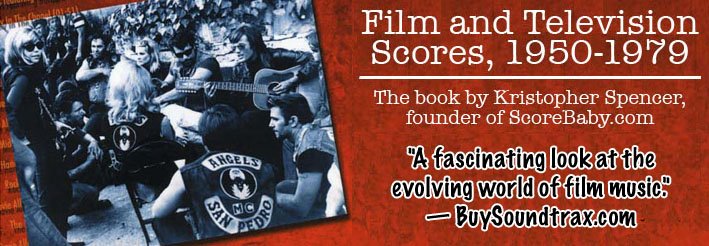 Bruno Nicolai was clearly on a roll with the genre and delivered another fascinating score for La Dame Rossa Uccide Sette Volte (Red Queen Kills Seven Times or The Corpse Which Didn’t Want to Die, ’72). Starting with a little girl’s solo voice, the theme unfolds like a nursery rhyme or folk melody played on harpsichord and guitar with pop orchestra supplying a lift. It is yet another paradoxical example of a lovely, feminine melody for a brutally bloody film where violence against scantily clad women is a part of its entertainment value. Another winsome track is “In Automobile,” a bossa nova that expresses sunny seaside drives. The suspenseful material also is top flight. Nicolai uses strings to create a veneer of tension as lone instruments (harp, harpsichord, etc.) sound out figurative “bumps in the night.” During the second half, a rock sensibility creeps into the rhythm section with frantic cymbals accompanying insistent drums, forceful bass and the metallic texture of a jaggedly strummed electric guitar as fast arpeggios race across this uneasy surface. This approach serves several tracks as the plot clearly reaches its climax. This is Nicolai at his most frantic, but even when he slows the orchestra and stops the rhythm section he never loses sight of the suspense.
Bruno Nicolai was clearly on a roll with the genre and delivered another fascinating score for La Dame Rossa Uccide Sette Volte (Red Queen Kills Seven Times or The Corpse Which Didn’t Want to Die, ’72). Starting with a little girl’s solo voice, the theme unfolds like a nursery rhyme or folk melody played on harpsichord and guitar with pop orchestra supplying a lift. It is yet another paradoxical example of a lovely, feminine melody for a brutally bloody film where violence against scantily clad women is a part of its entertainment value. Another winsome track is “In Automobile,” a bossa nova that expresses sunny seaside drives. The suspenseful material also is top flight. Nicolai uses strings to create a veneer of tension as lone instruments (harp, harpsichord, etc.) sound out figurative “bumps in the night.” During the second half, a rock sensibility creeps into the rhythm section with frantic cymbals accompanying insistent drums, forceful bass and the metallic texture of a jaggedly strummed electric guitar as fast arpeggios race across this uneasy surface. This approach serves several tracks as the plot clearly reaches its climax. This is Nicolai at his most frantic, but even when he slows the orchestra and stops the rhythm section he never loses sight of the suspense.– from Chapter 6: A Fearful Earful of Kristopher Spencer’s Film and Television Scores, 1950-1979



